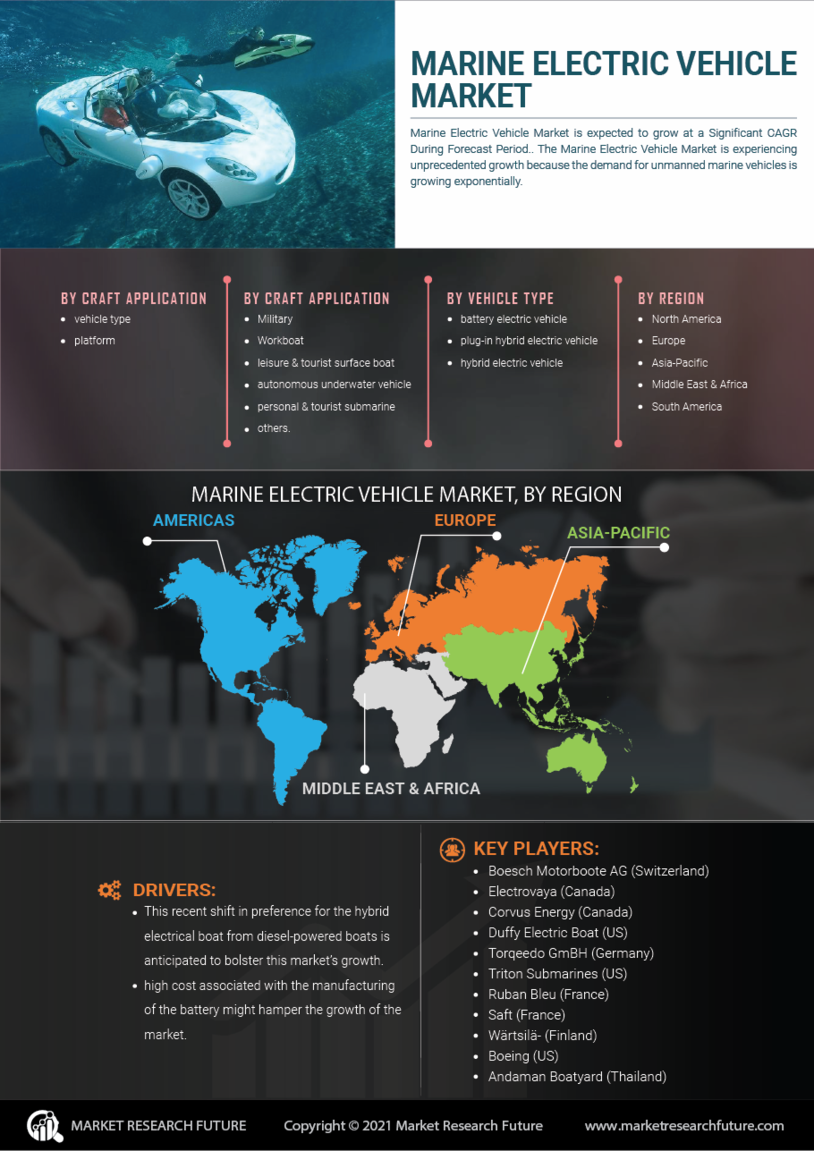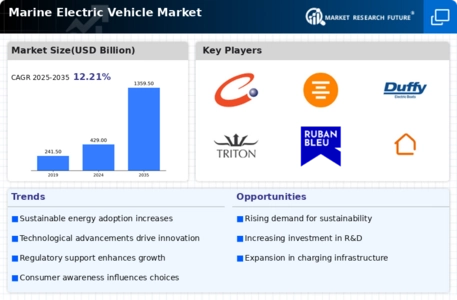Market Growth Projections
The Global Marine Electric Vehicle Industry is projected to experience substantial growth, with estimates indicating a market size of 429.0 USD Billion in 2024. By 2035, this figure is expected to reach 1359.5 USD Billion, reflecting a compound annual growth rate of 11.06% from 2025 to 2035. This growth trajectory suggests a robust demand for electric marine vehicles across various sectors, driven by technological advancements, regulatory support, and changing consumer preferences. The increasing focus on sustainability and environmental responsibility further underscores the potential for expansion within the industry.
Growing Environmental Concerns
The Global Marine Electric Vehicle Industry is experiencing a surge in demand driven by increasing environmental concerns. As nations strive to meet stringent emissions regulations, the shift towards electric marine vehicles appears to be a viable solution. The International Maritime Organization has set ambitious targets to reduce greenhouse gas emissions by at least 50% by 2050. This regulatory pressure encourages shipbuilders and operators to invest in electric propulsion technologies, thereby fostering market growth. The transition to cleaner alternatives not only aligns with global sustainability goals but also enhances the industry's reputation, potentially attracting more investment and innovation.
Government Incentives and Support
Government initiatives and incentives are significantly influencing the Global Marine Electric Vehicle Industry. Many countries are implementing subsidies and tax breaks to promote the adoption of electric marine technologies. For example, the European Union has allocated substantial funding to support research and development in sustainable maritime transport. Such financial backing not only lowers the entry barriers for manufacturers but also stimulates consumer interest in electric vessels. As governments worldwide prioritize green technologies, the market is likely to witness accelerated growth, contributing to the projected market size of 429.0 USD Billion in 2024 and 1359.5 USD Billion by 2035.
Expansion of Charging Infrastructure
The expansion of charging infrastructure is crucial for the Global Marine Electric Vehicle Industry. As more electric vessels enter the market, the need for accessible and efficient charging solutions becomes increasingly apparent. Ports and marinas are investing in the development of charging stations to accommodate electric marine vehicles, ensuring that operators can refuel conveniently. This infrastructure growth is essential for alleviating range anxiety among potential users and promoting widespread adoption. As charging networks expand, the market is likely to see enhanced growth opportunities, supporting the anticipated increase in market size to 1359.5 USD Billion by 2035.
Technological Advancements in Battery Systems
Advancements in battery technology are pivotal for the Global Marine Electric Vehicle Industry. Innovations in lithium-ion and solid-state batteries have led to increased energy density and reduced charging times, making electric vessels more viable for commercial use. For instance, the development of fast-charging systems enables vessels to operate efficiently without long downtimes. As battery costs continue to decline, the overall affordability of electric marine vehicles improves, encouraging adoption across various sectors. This technological evolution is expected to play a crucial role in the market's projected growth, with a compound annual growth rate of 11.06% from 2025 to 2035.
Rising Demand for Sustainable Shipping Solutions
The Global Marine Electric Vehicle Industry is witnessing a rising demand for sustainable shipping solutions as stakeholders increasingly prioritize eco-friendly practices. Companies are recognizing that adopting electric vessels can enhance their brand image and meet consumer expectations for sustainability. This trend is particularly evident in the tourism and leisure sectors, where electric ferries and yachts are becoming more popular. As environmental awareness grows among consumers, businesses are compelled to adapt their operations accordingly. This shift not only drives innovation but also positions electric marine vehicles as a competitive alternative, potentially reshaping the future of maritime transport.

















Leave a Comment